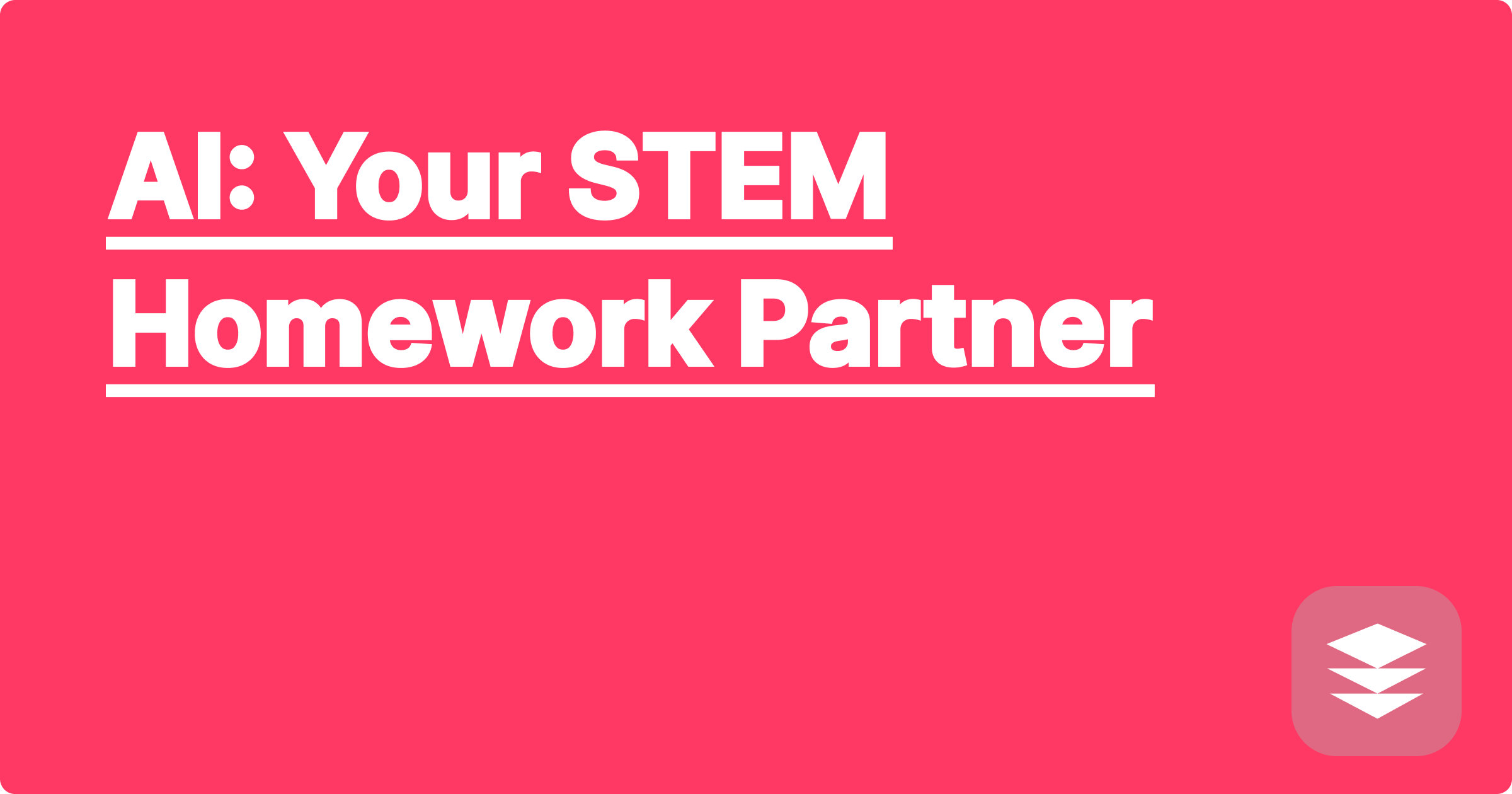
The demanding nature of STEM fields often presents a significant challenge for students and researchers alike. The sheer volume of information, complex concepts, and intricate problem-solving can feel overwhelming. Artificial intelligence (AI) offers a promising new approach to navigating these complexities, acting as a powerful supplemental tool to enhance learning and research capabilities. AI can assist with everything from understanding complex theories to generating code and verifying calculations, offering a valuable support system for STEM endeavors.
This emerging partnership between AI and STEM education is crucial for the future of these fields. As technology advances at an unprecedented rate, the ability to leverage AI tools will become increasingly essential for success. Students and researchers who embrace these technologies will be better equipped to tackle complex problems, accelerate their learning, and contribute meaningfully to their respective disciplines. This shift towards AI integration represents not just a trend but a fundamental change in how we approach STEM education and research.
STEM fields often involve grappling with abstract concepts and applying them to real-world scenarios. This requires not only a deep understanding of theoretical frameworks but also the ability to manipulate complex equations, analyze data, and design experiments. Furthermore, staying up-to-date with the latest research and advancements in rapidly evolving fields can be a significant hurdle. The traditional methods of learning, often relying heavily on textbooks and lectures, can struggle to keep pace with this dynamic environment. Students and researchers often find themselves needing additional support to effectively process and apply the vast amount of information they encounter. This challenge is further compounded by the pressure to perform well academically and contribute original research.
AI tools like ChatGPT, Claude, and Wolfram Alpha offer a novel approach to address these challenges. ChatGPT and Claude, for example, can provide detailed explanations of complex concepts, generate different approaches to problem-solving, and even assist in drafting research papers. Wolfram Alpha excels in computational tasks, allowing users to solve complex equations, visualize data, and explore various mathematical models. These tools can be used synergistically to create a comprehensive learning and research environment. By leveraging the strengths of each platform, students and researchers can gain a deeper understanding of the material, explore different perspectives, and streamline their workflow.
Begin by clearly defining the problem or concept you want to explore. This might involve formulating a specific research question, identifying a challenging homework problem, or seeking clarification on a particular theory. Once you have a clear objective, choose the AI tool best suited to the task. For conceptual understanding or brainstorming, ChatGPT or Claude are excellent choices. For computational tasks or exploring mathematical models, Wolfram Alpha is ideal.
Next, input your query or problem into the chosen AI tool. Be as specific as possible in your prompt to obtain the most relevant and accurate results. For instance, if using ChatGPT to understand a concept, ask targeted questions rather than simply stating the concept's name. If using Wolfram Alpha to solve an equation, ensure the equation is entered correctly and all variables are defined.
Finally, carefully analyze the output provided by the AI tool. Critically evaluate the information presented, comparing it with your existing knowledge and other reliable sources. Remember that AI tools are meant to assist, not replace, critical thinking and independent learning. Always verify the information provided and use your own judgment to interpret the results.
Consider a student struggling to understand the concept of eigenvalues and eigenvectors in linear algebra. They could use ChatGPT to ask, "Explain eigenvalues and eigenvectors and provide a simple example." ChatGPT might then provide a detailed explanation along with a numerical example demonstrating the calculation. Alternatively, a researcher investigating the population dynamics of a particular species could use Wolfram Alpha to model the growth rate using a logistic equation. By inputting specific parameters like the carrying capacity and initial population size, the researcher can visualize the population growth over time and explore different scenarios. Another example involves using Claude to generate different approaches for synthesizing a specific chemical compound. By providing the desired compound's structure, Claude could suggest various reaction pathways, helping the researcher explore different synthetic strategies.
Integrating AI tools effectively into your STEM workflow requires a strategic approach. Don't rely solely on AI for answers. Instead, use these tools to supplement your learning and research, always cross-referencing information and engaging in critical analysis. Experiment with different AI platforms to discover which ones best suit your specific needs and learning style. Learn to formulate effective prompts to obtain the most relevant and accurate results. Remember that the quality of the output depends heavily on the clarity and specificity of your input.
Furthermore, embrace the iterative nature of learning and research. Don't be afraid to refine your queries, explore different approaches, and revisit concepts multiple times. AI tools can facilitate this iterative process by providing quick access to information and alternative perspectives. Finally, remember the importance of ethical considerations. Use AI responsibly, acknowledging its limitations and avoiding plagiarism. Always cite your sources appropriately and ensure that your work reflects your own understanding and analysis.
To maximize the benefits of AI in your STEM journey, start by exploring the different tools available. Experiment with ChatGPT, Claude, and Wolfram Alpha to understand their strengths and weaknesses. Practice formulating effective prompts and critically evaluating the output. Incorporate these tools into your daily workflow, using them to supplement your learning, enhance your research, and streamline your problem-solving process. By embracing these technologies responsibly and strategically, you can unlock their full potential and significantly enhance your STEM endeavors.
Ace STEM Exams: AI Study Planner
AI for Lab Data: Analysis Made Easy
AI in Engineering: Boost Your R&D